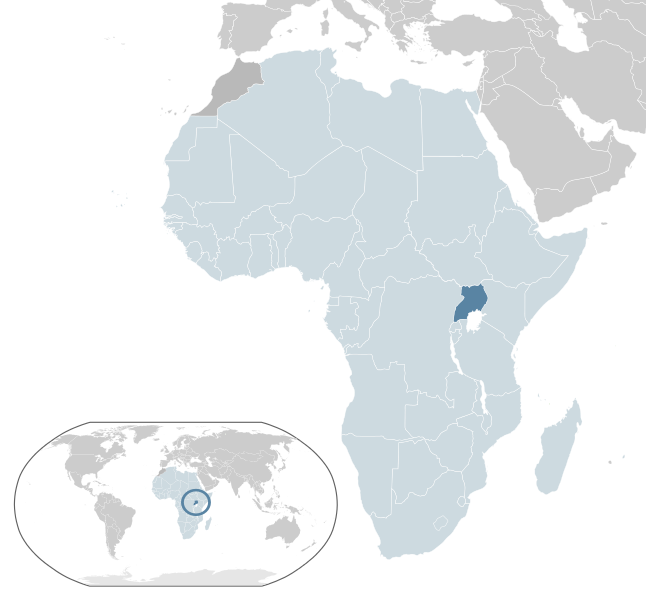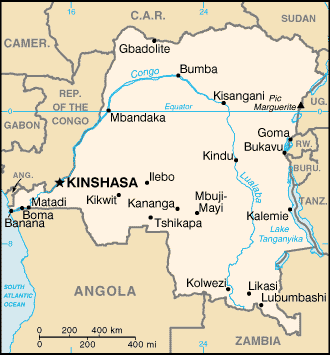The Uganda Ministry of Health (MoH), with support from the World Health Organization (WHO) has started vaccinating frontline health workers against the Ebola Virus Disease (EVD). The exercise, has began Wednesday in Ntoroko district and will initially be implemented in the five high risk districts ( Bundibugyo, Kabarole, Kasese, Ntoroko and Bunyangabu) bordering the Democratic Republic of Congo (DRC).

A total of 2100 doses of the ‘rVSV-Ebola’ vaccine will b administered to the health workers to protect them against the type of Ebola virus strain that is currently circulating in some parts of DRC. Indeed, this particular vaccine is currently being administered in DRC and is demonstrating positive protective results and potency against the Ebola virus-Zaire type.
Ebola ‘fingerstick’ test receives FDA emergency use authorization
In vaccinating frontline health workers against EVD even before Uganda detects a single case, health authorities are being cautious having learnt bitter lessons from previous outbreaks. A number of health workers including the renowned Dr Mathew Lukwiya contracted the disease and died as they cared for EVD patients. These could have been saved had a vaccine been available then.
Although the ‘rVSV-Ebola’ vaccine is not commercially licensed, it is being used under “expanded access” or what is also known as “compassionate use” in the ongoing Ebola outbreak DRC. This vaccine was also used in the Ebola outbreak in Equateur in May-July 2018. In 2015, the vaccine was given to more than 16,000 volunteers involved in several studies in Africa, Europe and the United States where it was found to be safe and protective against the Ebola virus.
Several studies have shown that the vaccine is safe and protective against the Ebola virus but more scientific research is needed before it can be licensed. The vaccine is therefore being used on compassionate basis, to protect persons at highest risk of the Ebola outbreak, under a “ring vaccination” strategy, which is similar to the approach used to eradicate smallpox. In this strategy, informed and written consent is needed from people to be vaccinated which in turn may limit mass media coverage of the exercise.
It is highly likely that Uganda may import EVD from DRC given the closeness of the current epicenter, the high population movements due to trade, social-cultural connections and easy accessibility of health services in Uganda.

Uganda’s Minister of Health, Dr Jane Ruth Aceng believes that the administration of the Ebola vaccine to frontline health care workers has been the missing link in the country’s EVD preparation and readiness efforts. She also explains that the vaccine is only available for frontline health workers who are at high risk of contracting EVD as they manage suspected cases.
“Therefore, the vaccine is not available to the general population at this stage. This is targeted vaccination,” Dr Aceng emphasized.
The current situation with the Ebola Virus Disease outbreak in the DRC shows a total of 319 cases of hemorrhagic fever were reported in the region, of which 284 confirmed and 35 probable, making the current outbreak the country’s biggest in its history.
According to the DRC Minister of Health, “On Friday, November 9, 2018, the Ebola Virus Disease epidemic in the provinces of North Kivu and Ituri just exceeded that of the first epidemic recorded in 1976 in Yambuku. the province of Ecuador. To date, 319 cases and 233 deaths have been recorded. ”
- Greece reports nine recent locally acquired malaria cases
- Jerusalem measles: Doctors ‘afraid they’re losing control’
- Serbia reports 23 measles cases in past month
- Vancouver: Public safety advisory issued over botulism risk with Betty’s King Sauce
- Adenovirus outbreaks in New Jersey: Two additional cases reported
- Brazil: Family of seven contract Chagas disease from acaí
- Acute flaccid myelitis in Illinois: 3 confirmed cases
- Measles in Rockland County: 55 cases, Increased school exclusions
- Hepatitis A outbreak continues to grow in Massachusetts
- Pakistan reports two additional polio cases, Global total rises to 27



2 thoughts on “Ebola: Uganda begins vaccinating frontline health workers”